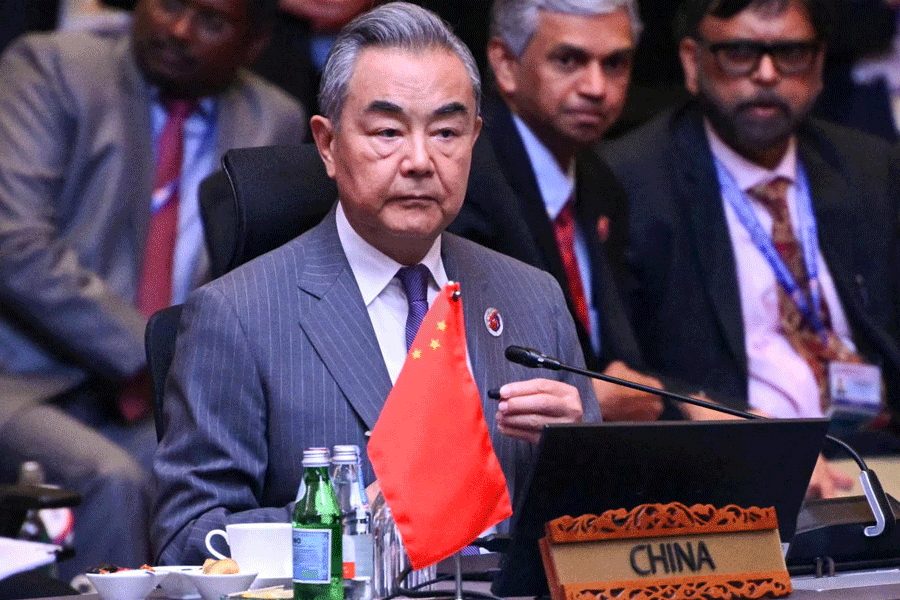The western part of south Bengal, the region lying between the Chhotanagpur plateau on the west and the Ganges delta on the east, is known as Rarh Bengal. The word rarh originates in the ancient Austric languages and means land of red soil. Just after the monsoons, this geography, bathed in months of rain, turns lush, the sun ripens the kaash phul, happy harbinger of the autumn festival of Durga Puja.
The people of Rarh Bengal have never been big on Durga Puja; they continue to worship a broad spectrum of gram devis or guardian deities instead, some of them from the pre-Vedic or Harappan era.
Many of the gram devis are avatars of Chandi or Chandika. Just around Katwa, a mofussil township in western Burdwan, one can find 37 Chandi deities and their shrines. This may surprise some because Durga also happens to be one of the fiercest forms of Chandi. And yet…
In some villages, such as Khirgram in eastern Burdwan, they worship the banana plant as one of the nine forms of Durga. There is no fanfare, no hullabaloo such as what one witnesses in pandals in Calcutta or Delhi or Mumbai. In Gomai village near Ketugram, also in eastern Burdwan, they pray to the mundo murti or the head of Durga in a small pandal. In Shimulia near Katwa, they pay obeisance to Hara Gouri — Shiva and Parvati along with their four children in all their domestic bliss — but not Durga, the demon slayer, on Navami.
It is a matter of wonderment that the celebration of Durga is so varied in the interiors of Rarh, so muted. According to Swapan kumar Thakur of Katwa, who is considered a human encyclopaedia of all things folk, rural and indigenous religions of Bengal, “These villages feel their gram devis and several other traditional goddesses are their real protectors as they look after them all year round. To them, Durga is much like a guest figure who visits once a year.”
Thakur tells The Telegraph about Devi Yogadya, the presiding deity of Khirgram; it seems she has a cult following across east Burdwan. Devi Yogadya is worshipped every year in the month of Baisakh with elaborate rituals, including a week-long temple fair. During the five-day festival, the idol of the goddess, hidden in a pond beside the temple, is fished out. “The origin of Devi Yogadya can be traced to pre-Vedic times and the rituals clearly show that she was co-opted by upper-caste Hindus,” says Thakur. Such is the dominance of Yogadya in the region that Durga Puja is forbidden in the precincts of the villages.
Shakambhari is the village goddess of Majhigram near Mangalkote, an ancient site of archaeological importance in eastern Burdwan. This goddess bears an uncanny resemblance to the goddesses depicted in Harappan seals. Shakambhari means one who nourishes mankind with fruits and vegetables. Temples of Shakambhari can also be found in Sakarai and Sambhara in Rajasthan and Saharanpur in Uttar Pradesh. She is believed to protect the starving during droughts and famines.
The goddess is worshipped on the ninth day of the month of Ashadh with grand rituals in Majhigram. During Durga Puja, the villagers worship Shakambhari as the supreme goddess or Adi Shakti of ancient times, instead of Mahisasuramardini.
Many experts claim that the all-powerful Goddess Durga — portrayed as the vanquisher of demons on Earth — finds no mention in ancient Vedic literature either, though references can be found in Devi Mahatmya, a relatively later text (6th century CE), infused with local religious traditions and vernacular influences.
Sagnik Dasgupta, who teaches in a college in Sainthia, Birbhum, has done extensive research in the study of medieval Bengali literature, especially the Manasamangal Kavya, one of the oldest religious texts in Bengal. He says, “Traditionally, Manasa (the snake goddess) and Sitala (believed to protect people from various ailments, including smallpox) are highly respected in this region.” He, too, remarks that most villages of Rarh are more loyal to their gram devis. “They don’t ignore Durga completely, but the gram devis are closer to their hearts,” he adds.
Mangal Kavya is a collection of Bengali religious texts, composed between the 13th and 18th centuries. “There are references to goddesses such as Manasa and Chandi in earlier texts (15th and 16th centuries), where Durga (Durga Mangal) comes in only around the 18th and 19th centuries, indicating that the deity was imposed on Bengal by upper-caste Brahmins on indigenous or subaltern Bengalis of yore much later,” says Dasgupta.
That is the reason some villages tend to ignore the presence of Durga or in one way or another merge her identity and attributes with that of their traditional matriarch goddesses.
“In a village near Ketugram, the traditional Bahulakshmi Devi is worshipped as Durga,” says Thakur. He continues, “In Bhalyagram, villagers worship Bhalya Chandi and clay idols of Durga are not allowed in these parts. In Kalikapur, Katwa, an eight-headed ancient stone idol of the village goddess is invoked as Durga just for a day, on Navami.”
The US-based anthropologist and social scientist Ralph W. Nicholas, who has studied parts of the Rarh region in the last six decades, attributes this to a synthesis of beliefs and what he says is a unique regional tradition of religion that has emerged by breaking down caste barriers. In his words, “There are always customs that are not affected by Brahminical rules and these endure as lokachar or deshachar (social or community practices)”.











